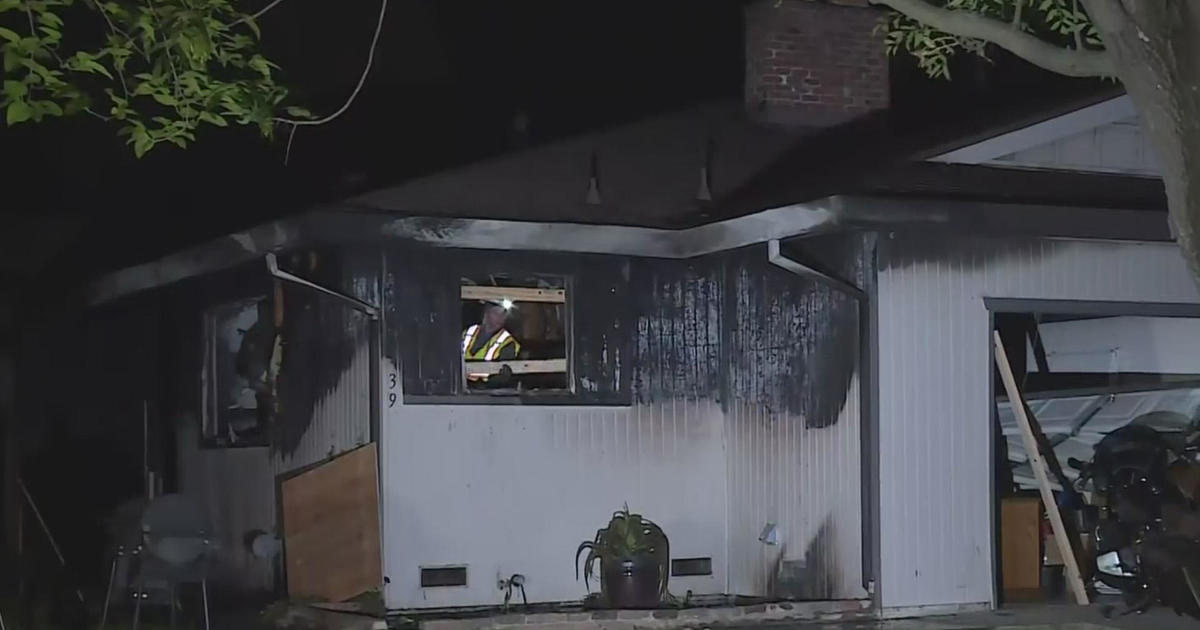Report: PG&E's Failure To Maintain Transmission Tower Helped Lead To The Deadly Camp Fire
(CNN) -- Inspections and maintenance of a California utility's transmission-line towers were inadequate for years, and that helped lead to an equipment failure that ignited the state's deadliest wildfire, state investigators say in a recent report.
The report sums up an investigation by the California Public Utilities Commission's Safety and Enforcement Division (SED) into the November 2018 Camp Fire, which killed 85 people and destroyed thousands of structures.
California fire investigators reported in May that Pacific Gas & Electric (PG&E) electrical lines caused the fire, and PG&E had conceded that a part had separated from a transmission-line tower, likely starting the fire in dry vegetation near the town of Pulga.
The SED's report, dated November 8, specifically pinpoints a tower where a metal "C-hook" holding an insulator assembly in place failed, thus allowing the assembly to fall to the ground.
"The C-hooks from the incident tower ... show significant wear that was not detected as part of PG&E's transmission infrastructure patrol and inspection program," the report says.
The failed C-hook's timely replacement "could have prevented ignition of the Camp Fire," the report reads.
The report accuses PG&E of 12 violations of state rules, some of which relate to the utility's alleged failure to maintain the C-hook, to replace or reinforce it and to thoroughly inspect the tower.
PG&E also did not document the factors and reasons that led to delayed repair work on the tower, the report says.
Some of the other violations, the report says, relate to inspection failures with other PG&E towers on the Caribou-Palermo Transmission Line that investigators examined during the investigation.
"SED's investigation of the Camp Fire found that the identified shortcomings in PG&E's inspection and maintenance of the incident tower were not isolated, but rather indicative of an overall pattern of inadequate inspection and maintenance of PG&E's transmission facilities," the report says.
The report was an appendix to the SED's November 26 request for a judge to roll this investigation into an existing probe -- one that is examining the role that PG&E's facilities had in igniting fires in 2017.
PG&E says it is deeply sorry about the role its equipment played
In response to the report, the utility said Monday that "PG&E accepts SED's conclusion that PG&E electrical transmission lines near Pulga were a cause of the Camp Fire, reaffirming Cal Fire's earlier determination."
"Without question, the loss of life, homes and businesses is heartbreaking," PG&E's statement reads. "The tragedy in Butte County on November 8, 2018, will never be forgotten.
"We remain deeply sorry about the role our equipment had in this tragedy, and we apologize to all those impacted by the devastating Camp Fire.
"PG&E's most important responsibility must always be public and employee safety, and we remain focused on helping affected communities recover and rebuild, resolving wildfire victims' claims fairly and expeditiously, and further reducing wildfire risks."
PG&E has been criticized in recent years for the role its equipment was found to have played in a series of catastrophic fires across the state, including the Camp Fire.
The company filed for bankruptcy in January as billions of dollars in claims were tied to deadly wildfires.
Hoping to avoid being blamed for more fires, the utility has been intentionally cutting electricity service during high winds and dry conditions.
PG&E should have known the tower needed closer inspection, report says
The report says PG&E procedures require annual patrol inspections of its transmission towers via walking or driving, or flying over them. It also requires detailed inspections -- ground or aerial -- at least once every five years.
For the tower that triggered the Camp Fire, Inspections should have identified visible wear on "the original runner arms," and that should have triggered a closer, climbing inspection.
But PG&E's records do not show any climbing inspection of that tower in at least 17 years, the report says.
"SED notes that a climbing inspection of the incident tower during that time (from 2001 to the time of the Camp Fire) could have identified the worn C-hook before it failed, and that its timely replacement could have prevented ignition of the Camp Fire," the report reads.
The-CNN-Wire
™ & © 2019 Cable News Network, Inc., a WarnerMedia Company. All rights reserved.



